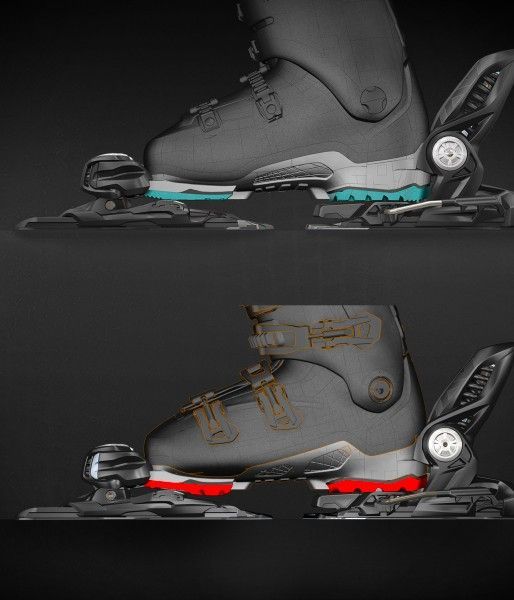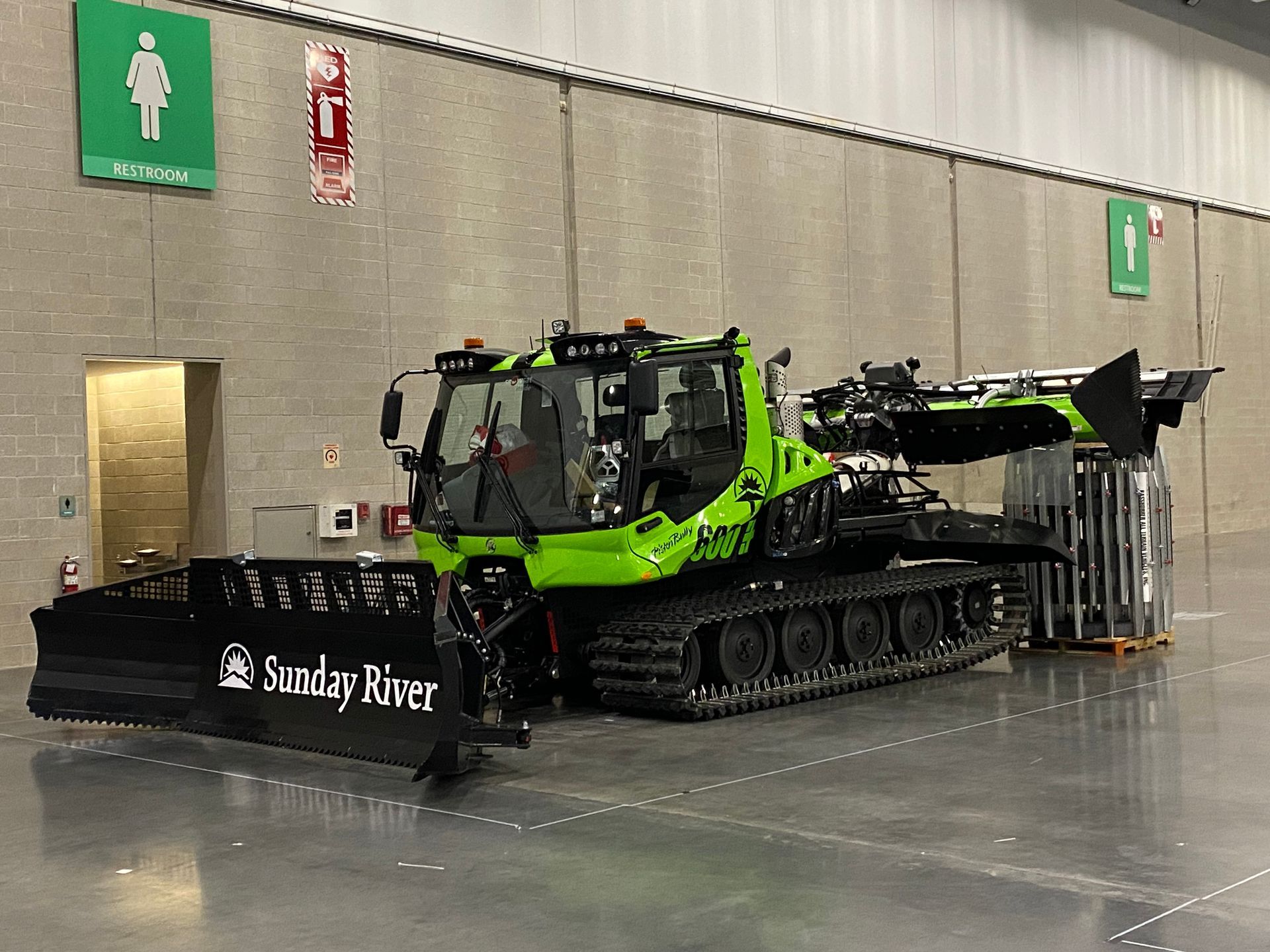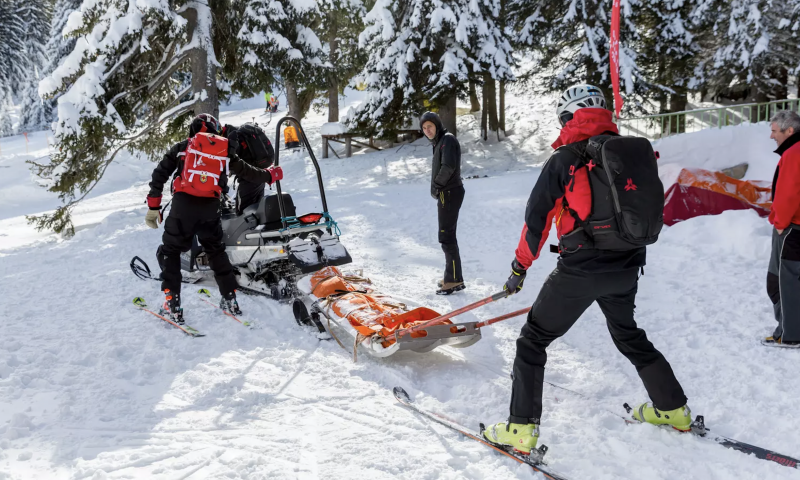What Do You Mean You Can't Adjust My Bindings To My New Boots? (Part 1- The Advent of GripWalk)
What is GripWalk and why does it matter?

First, a primer:
Over the years, different ways to attach boots to skis evolved.
In terms of bindings, you may have heard language like bear trap bindings or cable bindings (which were non releasable), then Cubco, Spademan, Nava, and a host of others.
Along the way, boot technology evolved, as well. Boots changed form leather hiking style boots, to the stiffer, hard plastic boots we are familiar with now.
The International Organization for Standardization (ISO) adopted standards for ski boots and bindings to ensure compatibility between different brands and models. The priority became skier safety by guaranteeing consistent release mechanisms, minimizing the risk of injury from bindings not releasing properly when needed, especially in situations where a skier might fall at high speed. This standardization helps to prevent confusion for consumers and promote safer skiing practices, by ensuring proper boot-to-binding interaction across various equipment combinations.
-End of Primer-
Today, there are many boot to binding combinations; combinations for multiple types/genres of skiing-
Alpine
Touring
Telemark
Cross Country
...among others.
With that, we find ourselves confused again.
Within Alpine skiing (the most common type of skiing in the Northeastern USA), there are several standards.
The newest one is GripWalk.
Many of us who have purchased new boots since 2016 know what GripWalk is.
Odds are, if you haven't purchased new boots or read any of the magazines that do product reviews, you still may not.
The traditional alpine boot to binding standard (many refer to it as the DIN standard), has been in place for over 50 years.
The relatively new GripWalk standard is significantly different, and bringing it into the mix has led to some issues-
Here's an example-
It's Wednesday.
The boot fit appointment you've waited two weeks for, finally came to pass.
The experience was great- you tried on 3 boots and the third one was the charm!
They fit great, you love them.
You can't wait to go skiing in boots that finally feel good.
You also can't believe you thought ahead- you brought your skis with you...
You've paid for the boots, paid for the adjustment, there's even enough time to get the skis tuned up.
You can pick them up the day after tomorrow, which is just in time for you to leave for a weekend of skiing.
You've had such a great experience, you slipped the fitter a $20.
You deserve a pat on the back for the great day you've had. The stress of worrying about another day of skiing in old, painful boots, isn't a thing anymore.
Sweet relief!
The next day, Thursday, you get a call from the ski shop informing you that the boots aren't compatible with your bindings. They're talking about something called "GripWalk".
What the heck is GripWalk?
In 2016 Marker, working with Dalbello boots, created a new standard for ski boot to binding interfaces.
This arose out of a need for people to do more walking in their ski boots.
Early on, snowboarders realized that they could hike to the pipe or the park, and not pay for a lift ticket. They had it easy- their soft, comfortable boots with grippy walking soles made walking up a no-brainer.
With the migration of lift ticket sales moving away from snow boarders to skiers, this created an inevitable rise in skiers playing in the park and the pipe- also hiking up rather than riding lifts. Even if they needed the lift ticket, they found that hiking was quicker than the lift, and it allowed them to inspect their "course" and spend more time working on tricks, rather than riding lifts and traversing to the run. This wasn't easy in the old school, flat and slippery soles ski boots had.
In another scenario, western skiers often booted up in the car- The Snowbird faithful understand-
Killington people parking on the road to Killington Lodge also know what I mean.
With paid parking nearest the lifts popping up all over the place, hiking to the lifts is growing more and more common-
Not to mention, the rise in popularity of ski touring has also brought on the need for something better than a flat, smooth sole.
With necessity being the mother of invention, The GripWalk standard was born.

The boot on top, with the turquoise soles, has traditional alpine boot soles.
The boot on the bottom, with the red highlighted sections, has GripWalk soles; the most obvious differences being in the toes, where it's ramped instead of flat. Additionally, they have more aggressive lugs, which grip better in the snow.
Because of these changes, along with a few others, a redesign to the way bindings function was in order.
With traditional bindings, GripWalk soles can bind during the release process.
Therein lies the reason for the phone call from the shop.
What's the solution?
For the first few years after the release of GripWalk ski boots, many boot manufacturers began including a spare set of traditional alpine soles in the box.
That helped make the transition a bit smoother- boot and binding techs could easily swap them out, prior to any binding adjustment.
As of this writing, many manufacturers still make replacement soles, which you can order directly from them for $30 to $60.
In the case that the soles are not replaceable, or none are available from the manufacturer, you will have to replace the bindings.
In the case that the bindings are on a system ski, you will need to replace both the skis and bindings.
We now know that the boot manufacturers provided a means to ease the transition to/addition of the new standard.
What about the binding manufacturers?
That's a different story- replacing binding toes, or altering them to make them compatible with GripWalk soles is a whole other level of complication.
So, the best answer (from the perspective of the binding manufacturers), is to age them out, vis-a-vis, remove them from the indemnification list.
See part two for what that means.
In the meantime, how can you make sure everything is meant to work together?
The answer is simple; look for the GripWalk logo on both the boots and the bindings.

More and more bindings are being designed such that they are GripWalk compatible, so the GripWalk logo appears on more binding models every year.
But what about my older boots with the traditional alpine soles?
Fear not- the newer GripWalk compatible bindings are backward compatible with traditional alpine soles.
Is that it?
Is that all I need to know?
Well, almost.
There are 3 standards to talk about.
The International Organization for Standardization (ISO) specifies the standards for the ski industry.
ISO 5355 (otherwise known as the DIN standard), it the original standard for alpine boot soles. The standard has provisions for both A (adult) and C (child) bindings (ISO 5355-A and ISO 5355-C).
ISO 23233 is The GripWalk Standard These are marked with the GripWalk logo. This standard has provisions for both for bot A and C bindings.
ISO 9523 is The Touring boot sole Standard. Multi-norm compatible bindings will be marked with:
MNC or MN
WTR is Walk to Ride- similar standard to MNC.
I.D. / Sole I.D. That's Marker's answer to multi-norm compatibility.
AT stands for All-Terrain. Frame bindings under this category may or may not be multi-norm compatible. Tech or "Pin" bindings under this category have their own standard, and are function differently (see below). The toes, technically, don't release. The heels, however, do.
Lastly, there are HYBRID boots, which work in hybrid bindings. Those boots generally have GripWalk soles and tech inserts for compatibility with the pins built into hybrid/touring bindings.
More on that in part 3, along with touring and the different standards associated with it.
Credit to https://www.grip-walk.com/ for the logos and graphics.

OVERVIEW
CONTACT
E-mail: soulofskiing@gmail.com







